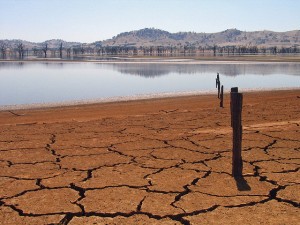 Water and energy networks are inextricably linked. Energy production and electricity generation both require water. Conversely, treatment and distribution of water to consumers and wastewater collection and treatment depend on energy. There are multiple other connections between these two fundamental resources and therefore new paradigms are needed for increased usage efficiencies to minimize energy-water conflicts, especially when considering that climate change will significantly impact both.
Water and energy networks are inextricably linked. Energy production and electricity generation both require water. Conversely, treatment and distribution of water to consumers and wastewater collection and treatment depend on energy. There are multiple other connections between these two fundamental resources and therefore new paradigms are needed for increased usage efficiencies to minimize energy-water conflicts, especially when considering that climate change will significantly impact both.
Water has traditionally been abundant in the US, even in drier parts of the country where large, federally funded infrastructure projects have literally made the desert bloom. Energy was also largely readily available so there were few conflicts between extracting and generating these resources. Due to multiple factors including climate change, it is clear that previous water management and energy policy strategies will not meet the nation’s needs, especially in drier regions of the country.
A particularly pointed example is California, where 19% of the TOTAL energy used in the state goes to pumping and treating water for irrigation and potable uses. Another inextricable link between these two resources is the amount of water that is required to extract individual fuels. While solar and wind are generally considered to have a zero water intensity (it can be argued there is a small amount of embedded water used in the manufacturing and materials), the production of biofuels in the form of irrigated corn can result in a water intensity of 16,000 gallons/mmBTU. These numbers compare to less than 10 gallons/mmBTU if natural gas is used to generate electricity and less than 200 gallons/mmBTU if enhanced oil recovery with water or steam is used.
To a significant degree, agriculture also influences how water and energy overlap in a region. Agriculture uses 80% of the nation’s ground and surface water available for consumption while many Western States use more than 90% for this purpose. Clearly, water management and energy policies do impact how these two resources intersect and function in a region.
Ken there is new technology coming on line that will drastically lower desalination costs. I have see it work in person. At present they are scaling it up and the… Read more »
One of the first and most important things is to integrate water resources into energy planning. Energy models used for long-term planning by governments, utilities, ISOs, and others generally ignore… Read more »
Water and electricity are currently managed separately even in regulatory agencies tasked with overseeing both. The technical details of water and electricity provision are so different, it is hard to… Read more »
The Appellate Court in Rochester has invalidated the contract a Pennsylvania municipality had with a subsidiary of Shell Oil to purchase 1 million gallons of water daily from the aquifer… Read more »
an addendum to my comment … new regs at the state level “Finally, the PUC (Pennsylvania) decided to expand the Total Resource Cost test, which measures the cost-effectiveness of proposed… Read more »
The tables below contain data published on waterfootprint.org by the University of Twente, the foremost authority on water footprint that is also officially recognized by the UN. Water footprint includes… Read more »
I very much like you proving the statement that there are lies, damn lines and staticics. The most dangerous source of electricity is the best I have seen in a… Read more »